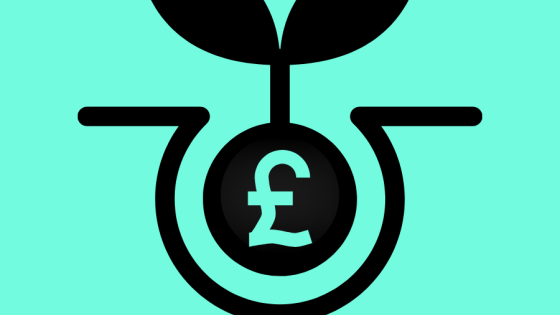Define your fears!
21 Nov 2017
Why defining your fears can be as important as defining your goals
Have you ever wondered why some people seem to cruise through life and enjoy significant successes relatively easily?
And have you ever wondered why these people seem very content and in control of everything they do?
Well suppose I told you that all of these people are most likely able to make the right decisions at the right time, but because of this they have made some pretty big mistakes, and suffered because of those decisions. For those of you wondering ‘How can we know if a decision is right at the time we decide to take an action’ – of course we can’t know, but at the time we choose to do something it should feel like the right decision. This blog is geared towards making decisions as a business leader, but it can be used in any decision making process you find yourself faced with during the course of your life.
Running a business can be exciting and daunting at the same time. A lot of business owners choose not to make decisions and simply wait to see how things turn out - ‘we’ve always done it this way’ they might say. This is quite probably the ‘safe’ option, because decisions most likely mean change, and change can be daunting. However, the biggest killer of any business is indecision, and choosing to do nothing or just waiting to see what happens is ‘indecision’ its truest form.
The most successful businesses that we see all have something in common. They all have leaders who have devised an operating system for thriving in high pressure environments, enabling them to make better decisions (or any decisions at all for that matter!). As the famous Stoic philosopher Seneca said, <i>‘We suffer more often in imagination</i><i> than in reality</i>’. What he really means by this, is that if we define our fears, we should be able to control our behaviours and in turn make the right decisions at the right time.
<b>Fear Setting</b>
Fear setting, rather than goal setting, is a great way to help us make decisions and essentially define our fears. For any business decision you need to make, try using the ‘What If I….’ decision making process.
<b>Step 1 DEFINE</b>
What are the worst things that can happen if I go through with this? List as many as you can possibly think of! Let’s say for example you need to travel to Dubai to meet a potential new client and you list the following fears:
<ul>
<li>Flight is delayed </li>
<li>Luggage is lost </li>
<li>You will struggle to get to the hotel </li>
<li>The heat is too much for you </li>
</ul>
<ul>
<li>You’ll get sunburnt </li>
<li>You don’t know what the potential new client looks like so you may not notice them </li>
</ul>
<b>Step 2 PREVENT</b>
What can I do to prevent these things from happening?
The best thing you can do now is come up with preventative plans that help you to make your decision as to whether or not to go to Dubai. For instance you could:
<ul>
<li>Book an earlier flight to combat any delays </li>
<li>Carry spare clothes in your hand luggage </li>
<li>Pre-book a taxi to the hotel </li>
<li>Pack a lot of suntan lotion! </li>
</ul>
<ul>
<li>Do a bit of internet research on your potential new client e.g. Linkedin </li>
</ul>
<b>Step 3 REPAIR</b>
If my fear comes true, how can I fix it?
The best laid plans don’t always work, so be prepared to fix yours. If for instance you turn up to the meeting venue and you still don’t recognise your potential new client, take ownership of the situation by emailing them your location and what you are wearing.
So if you <b>DEFINE – PREVENT – REPAIR</b> during your decision making processes, you may well find that you find it easier to start making timely decisions. If you are still not convinced, the final ‘final’ step is to try and calculate the cost of your inaction. Ask yourself:
<ul>
<li>What is the 6-month cost (financially/commercially/socially)? </li>
<li>What is the 1 year cost? </li>
<li>3 year cost? </li>
</ul>
It’s likely by this stage you will realise the cost of not getting on the plane to Dubai is too much to risk not doing it. Speaking of risk, as one final little tip, risk exists in pretty much every decision you make. But considering risk in isolation is, well, risky! Every risk has a probability factor as well, but often the higher the stakes the greater the reward. The ideal scenario of course is a decision with high risk worse case scenario, but with a low probability factor of something going wrong; if you are ever fortunate to be faced with this type of opportunity, define your fears as quickly as possible and make the right decision!
Earlier on in this blog I spoke about successful business leaders making big mistakes. If you speak to every single one of these people, they will tell you the same thing. That is, it's their mistakes that make them better versions of themselves. It helps them to understand what they are capable of, and to make better decisions in the future. Every highly successful person will have one thing in common, if nothing else - they will have made more mistakes than good decisions.
I will leave you with some decision based quotes and mantras that we really love at Team CB -
<ul>
<li><i>‘Easy choices, hard life. Hard choices, easy life’</i> </li>
<li><i>‘Hard choices </i><i>are what we most need to do’</i> </li>
<li><i>‘Turn every obstacle into an opportunity’</i> </li>
<li><i>‘Keep calm in the chaos!’</i> </li>
</ul>
News & Resources

Annual Tax on Enveloped Dwellings
More

Less than 2 months to self-assessment filing deadline
More

IHT treatment of unused pension funds and death benefits
More

VCT and EIS changes
More

When are employers required to provide security to HMRC?
More

Budget Summary November 2025
More

Claim flat rate expenses for work clothing and tools
More

VAT relief for commercial samples
More

